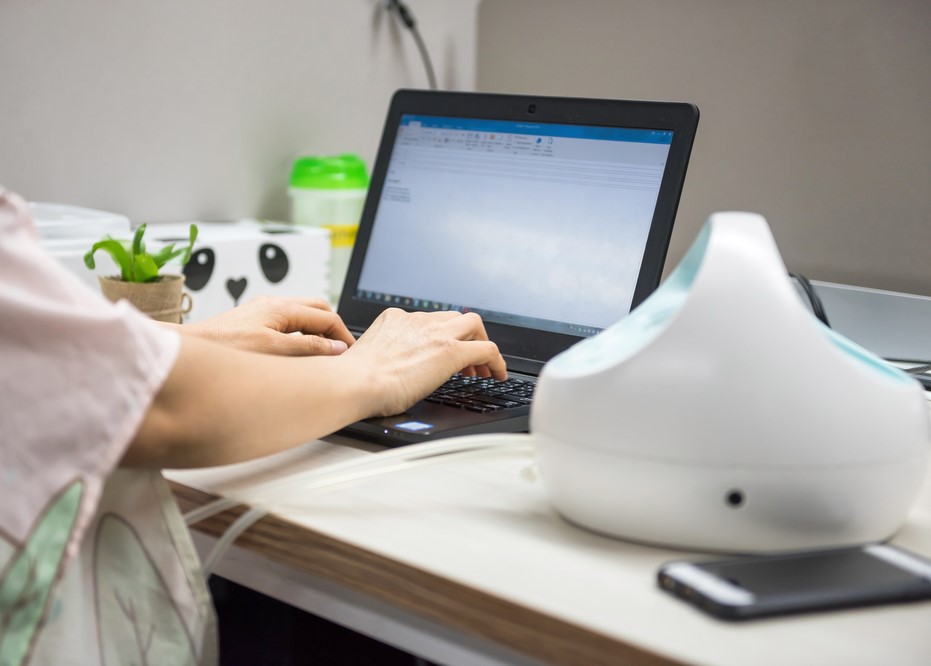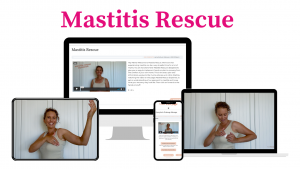Wondering why you're getting mastitis pumping when exclusively pumping?
Hey, super mamas! Whether you’re mastering the art of exclusively pumping or just getting started, you’re doing an amazing job nourishing your little one. But let’s face it: pumping can sometimes feel like a never-ending dance with a stubborn machine. And just when you think you’ve got the moves down, mastitis might decide to join the party.
Before you get too worried, let’s dive into how your pump might be playing a part in this unwelcome intrusion and what you can do to keep mastitis at bay—all while keeping it proactive and problem-solving!
Mastitis: The Uninvited Guest
Mastitis is like that party crasher who shows up unannounced, and instead of bringing snacks, it brings pain, swelling, and a whole lot of discomfort. It’s an inflammation of the breast tissue that can cause flu-like symptoms, including fever and fatigue. Fun, right? Not so much. But don’t worry, we’re here to help you avoid this unwelcome guest.
Pump and Circumstance: How Your Pump Might Be Causing Mastitis
- Incorrect Flange Size: Think of your flanges as the perfect pair of shoes for your nipples. If they don’t fit right, you’re in for a world of hurt—literally. Incorrect flange size can lead to bruising, blisters, and improper milk flow, which can cause blockages. It’s like trying to dance in shoes that are two sizes too small. Ouch!
- Over-Pumping: More is not always better. Pumping too frequently or for too long can be rough on your breast tissue, causing trauma and inflammation. Think of it as overdoing it at the gym—except for your boobs. They need a break, too!
- Pumping with Too Much Suction: Cranking up the suction might seem like a good idea, but it can actually cause more harm than good. Too much suction can lead to sore, irritated nipples and breast tissue, making you more prone to mastitis. It’s like turning up the volume to max at a concert—your ears won’t thank you, and neither will your boobs.
Did you know? Your nipples can change size throughout your breast-pumping journey!. Although this may seem like an irrelevant point when it comes to expressing milk, it actually has an impact on the equipment you use, specifically the flange. You need to ensure you have the right fit for you in order for your milk to be drawn effectively. It’s a good idea to regularly check in with the positioning of the shields to ensure they are still the best fit for you!!
Keeping Mastitis Away: Smart Pumping Tips
Now that we know what might be causing mastitis, let’s talk about how to avoid it with some smart and savvy pumping strategies.
- Find Your Perfect Fit: Getting the right flange size can make a world of difference. Many moms don’t realize that their pump might come with flanges that aren’t the best fit. A lactation consultant can help you find the right size, making your pumping sessions more comfortable and effective.
- Pace Yourself: Pumping shouldn’t feel like running a marathon. Stick to a schedule that works for you and avoid the temptation to pump for too long. Your breasts will appreciate the gentle, consistent approach, and you’ll avoid unnecessary wear and tear.
- Adjust the Suction: Start with a lower suction setting and gradually increase it to a comfortable level. Your breasts are not a one-size-fits-all situation, so listen to your body. If it hurts, ease up. Your goal is to mimic your baby’s natural sucking, not to turn your pump into a mini vacuum cleaner.
Pumping Tip: If you feel like your pump is not working so well of late, you know, seemed like it used to do a better job, make sure that it is not faulty. Manufacturers can test this for you if you are suspicious. Pumps can turn faulty - ahhh...another thing to think about.
When Mastitis Tries to Sneak In
Sometimes, despite our best efforts, mastitis can still make an appearance. Here’s what to do if you start feeling those telltale signs:
- Stay Calm and Pump On: It might be uncomfortable, but continuing to pump is crucial. Keeping the milk flowing can help but don't go bananas trying to get every last drip. Just pump to comfort in the breast. Much of the mastitis swelling is NOT MILK so don't work hard trying to get it out. It's a thankless task that will not respond in kind.


- Seek Professional Help: If symptoms persist or worsen, don’t hesitate to contact your healthcare provider. They can provide guidance and, if necessary, prescribe antibiotics if they are clinically indicated, to help you get back on track.
- Our online courses can be the bees-knees for RIGHT NOW! It's why one is even called Mastitis Rescue - because right now you need that. The right advice, the right treatment strategy, and the best massage techniques that WILL work on clearing that swelling that your pump simply cannot do! (see below)
Pump On, Super Moms!
Remember, mastitis is a temporary setback, not a permanent roadblock. By paying attention to your pumping routine and making small adjustments, you can reduce your risk and keep doing the incredible job you’re already doing. So, let’s toast to you and your pumping prowess!
Keep learning, stay strong, and pump on!

Author: Dr Katie Willy
Osteopath & Your Two Jugs Co-Founder

Elise Fuller & Katie Willy
Osteopaths & Your Two Jugs Co-Founders
Elise & Katie are Melbourne based osteopaths who have been actively treating breastfeeding women in clinic since 2015. During 2020 lockdown they launched Your Two Jugs to educate more mamas about how to treat their own mastitis, blocked ducts and engorgement. Their online video based courses Boobology and Mastitis Rescue is available now with all the techniques we show our mamas in clinic.
Your Two Jugs is passionate about support for mamas from the top. Boob Hero is a comprehensive health care practitioner course to educate manual therapists on their contribution to supporting breastfeeding women with hands on care. Empowerment all starts with education, and the more support available for women, the better.




